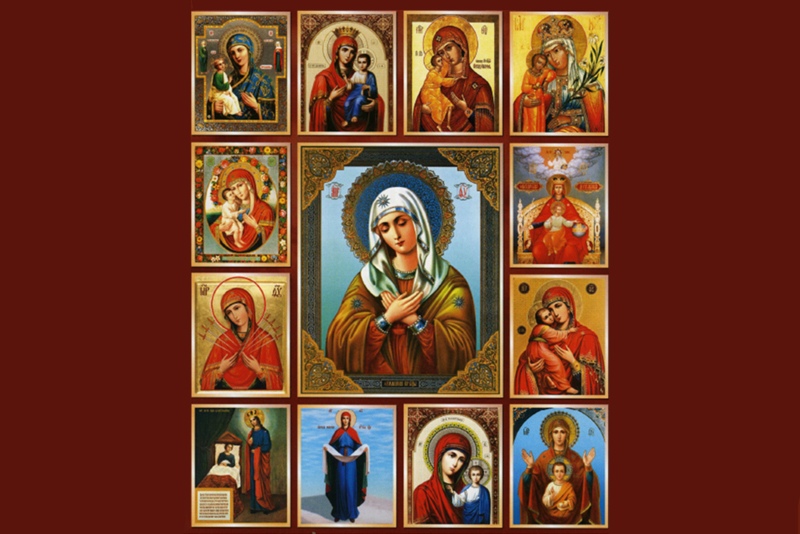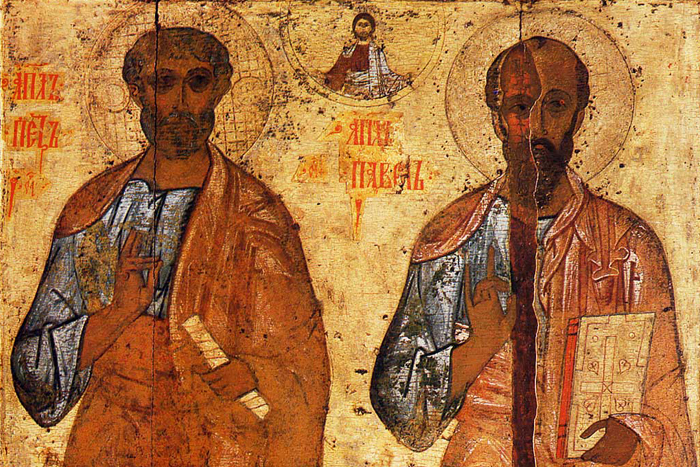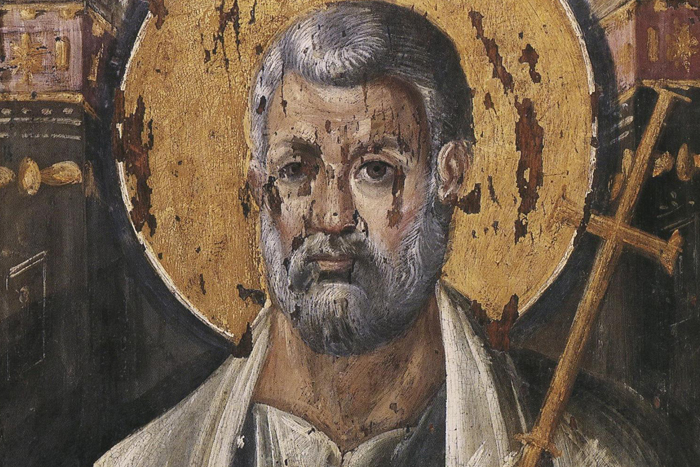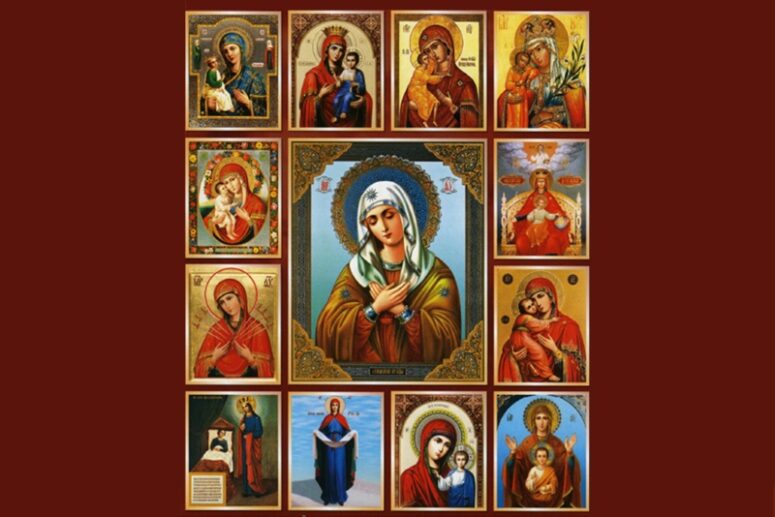
“The icons of the Mother of God are like stars in the sky. Only the Heavenly Queen knows their number…” says the legend about the life of the Most Pure Virgin. The church, however, recognizes that St Luke the Apostle was the one who painted Her first images. According to one legend, the evangelist painted only three icons of the Mother of God, while another one mentions many more icons that he wrote after Her Assumption. We have decided to find out how many icons of the Theotokos by St Luke we could single out and what images they are.
On the canonical territory of the Russian Orthodox Church there are currently 10 icons of the Mother of God that were presumably painted by St Luke. 21 more images are located in the West, including Mount Athos. 8 of them are in Rome.
Some of the most famous icons of the Most Pure Lady painted, according to legend, by the holy apostle are the Vladimir, Kykkos, Jerusalem, Fedorovskaya, Iberian, Khakhuli, Smolensk, Korsun, Sumela, Philermos, Tikhvin, Częstochowa, Vilnius, Blachernae, Chełm, Minsk and Bethlehem images. The evangelist is also recognized by the Catholic West as the first icon painter. His images are also revered there, including Santa Maria del Popolo, Santa Maria della Grazia, Santa Maria Maggiore, Santa Maria della Consolazione etc.
Unfortunately, all of these icons are ancient copies; none of the original icons painted by St Luke have survived, which raises some doubts about their originals’ true authorship. Leonid Uspensky, a well-known Russian icon painter and theologian of the 20th century says: “… Icons are attributed to the Evangelist not in the sense that they were painted by his hand, since none of the icons that he himself painted has reached us. The authorship of the holy Evangelist Luke must be understood here in the sense of them being copies (or rather, copies of copies) of the icons once painted by the Evangelist. The Apostolic Tradition is to be understood here in the same way as in relation to the apostolic canons or the apostolic liturgy. They go back to the apostles not because the apostles themselves wrote them, but because they bear an apostolic character and are endowed with apostolic authority. The same is the case with regard to the icons of the Mother of God, painted by the evangelist Luke.“
The book titled The Earthly Life of the Most Holy Theotokos and the Description of Her Miraculous Holy Icons… (1897) provides a detailed description of the first images of the Theotokos. “Of the three icons of the Most Holy Theotokos painted by the holy apostle and evangelist Luke and rewarded with Her blessing and Her grace one is called Hodegetria, or the Guide; it depicts the Blessed Virgin with the Eternal Child on Her left arm”. This type, for example, includes the Smolensk, Tikhvin, Częstochowa and Bethlehem icons of the Pangaea. “The other two are called Merciful, because the Mother of God is depicted on them begging Her Son God for the salvation of the Christian race. One of these icons portrays the Mother of God without the Only Begotten Son and is called the Merciful” (Khakhuli and Philermos icons fit this description). “She is depicted on the other icon with Christ Child on Her right-hand side. This icon is called the Merciful-Kykkos (from Mount Kykos, located on the northwestern side of Cyprus) to distinguish it from the others. The Kykkos, Korsun and Vladimir images of the Heavenly Queen correspond to this description. The original of the latter, according to legend, was written by St Luke on the top of the table that the Holy Family used for meals (perhaps, the common prototype for this subgroup of icons). “It is believed that these three icons were sent by the holy Evangelist Luke to the Nazarenes in Egypt, who were pious Christians learning monastic life from the Evangelist Mark.” Legends about most of the listed icons contain similar information about their early transitions. Presumably, in the 5th century the icons painted by St Luke, were brought from Egypt to Byzantium, and began to spread throughout today’s Russia, Serbia, Georgia and other countries after 10-11 centuries.
All three types of icons of the Theotokos have reached Russia. Among them, the most striking examples are the Vladimir (Merciful) Icon, Smolensk Hodegetria and Philermos icon. They were brought from Constantinople to the Russian lands around 11-12 centuries.
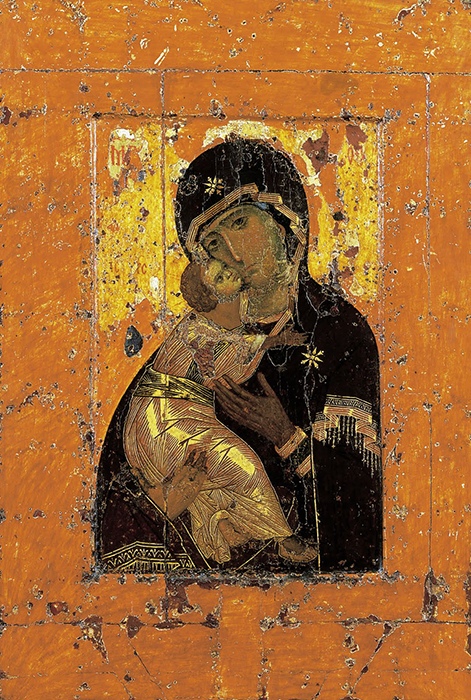
Take a look at this icon in the catalog >>

Philermos icon of the Mother of God. Byzantine icon painting
Keep exploring hand-painted icon of the Mother of God of Philermos >>
The oldest surviving images, without exact dating, include the Kykkos merciful icon (now located at the Kykkos monastery in Cyprus), the Sumela icon (located in the village of Kastania in Greece), the Khakhuli icon (kept in the Tbilisi Museum of Art in Georgia) and the Philermos miraculous icon (can be found in the Blue Chapel of Cetinje in Montenegro).
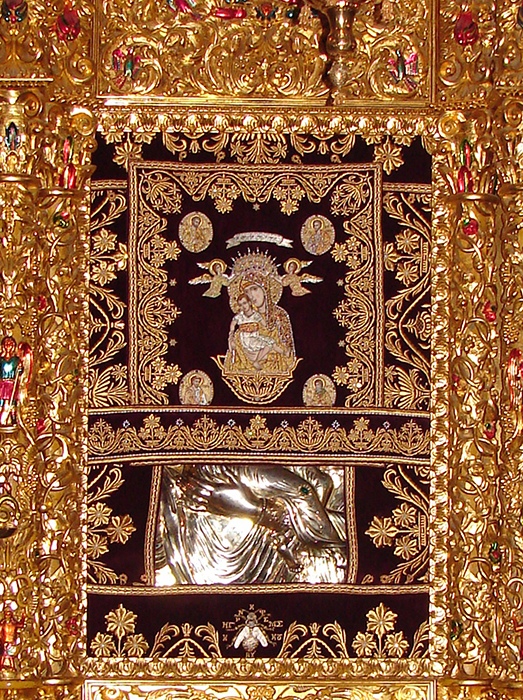
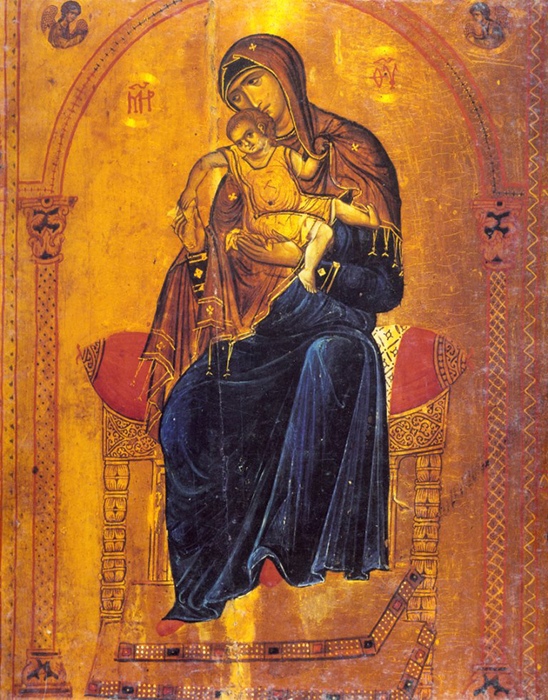

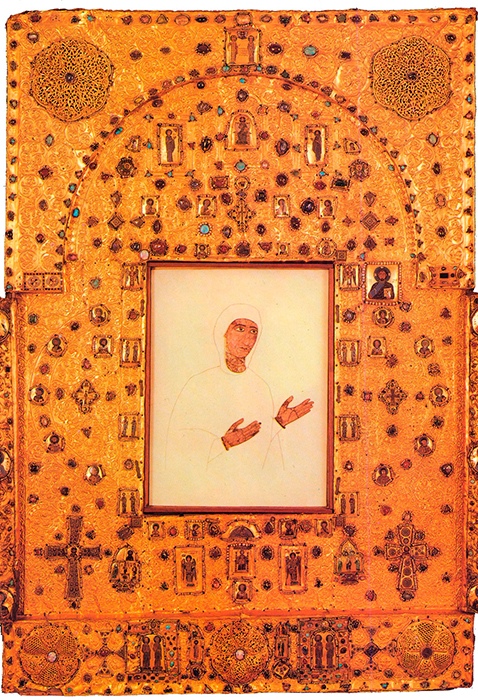
There is also a legend according to which, after the Dormition of the Most Holy Theotokos, St Luke continued to paint Her images from memory. In his missionary travels he portrayed 70, 80 or 150 images of the Most Pure Lady, according to various sources.
As we can see from the surviving legends, St Luke the Apostle is likely to have painted many icons of the Theotokos. Even though most of them are only ancient copies, they still convey to the world the grace of the Mother of God. No less importantly, they have preserved to this day Her bodily and spiritual appearance for everyone praying with faith before any of these icons to see Her compassionate Image with confidence in being heard.
Materials used: https://azbyka.ru/otechnik/Biblia/zemnaja-zhizn-presvjatoj-bogoroditsy-i-opisanie-svjatyh-chudotvornyh-ee-ikon/30_2

